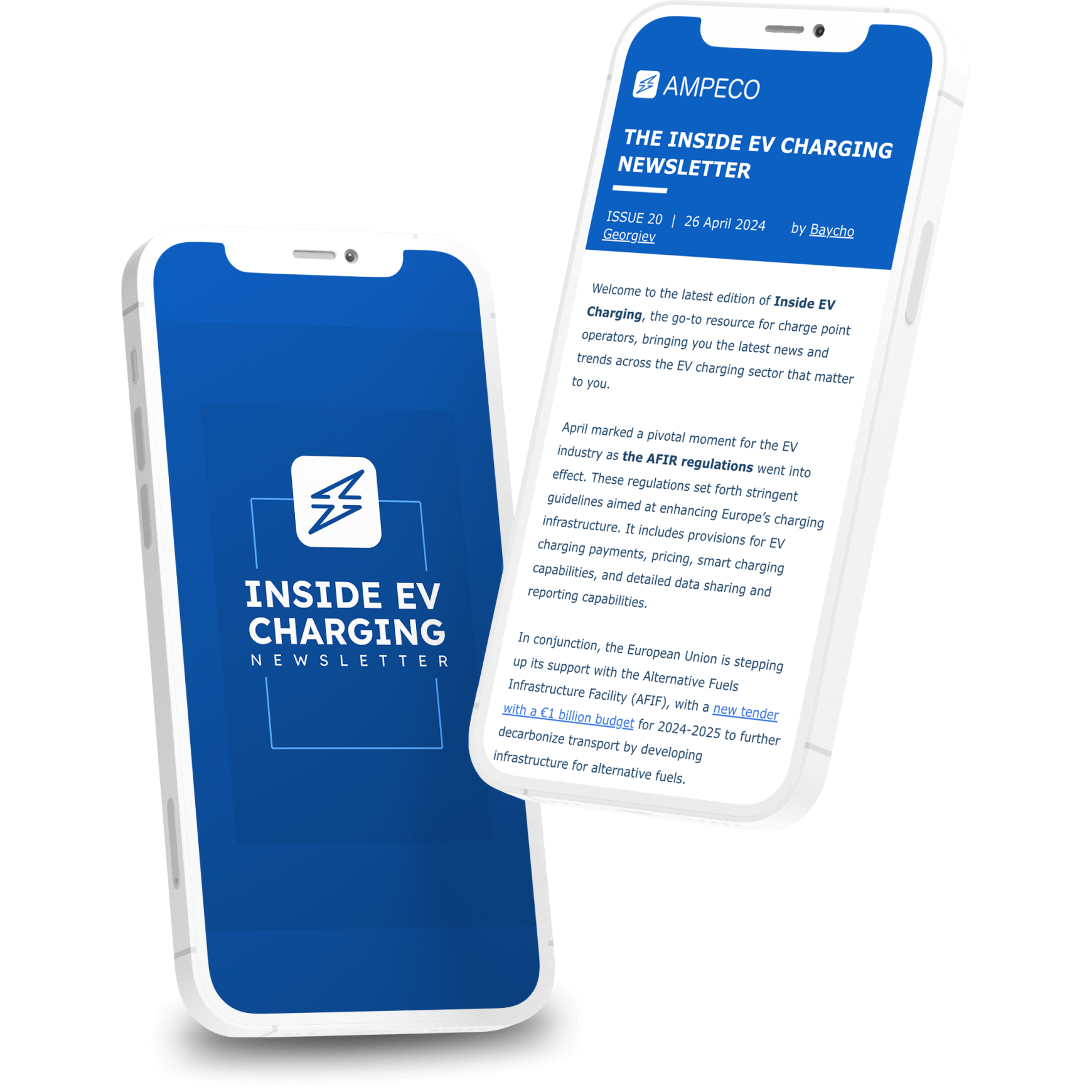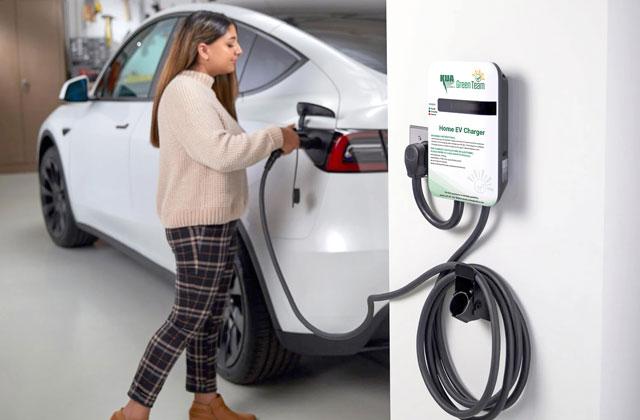Top EV Charging News: Secret Updates on Framework and Innovation
Current Innovations in Fast-Charging Technology

Additionally, advancements in battery innovation, consisting of improved thermal administration systems and greater energy thickness batteries, enhance fast-charging capacities. These developments alleviate the threat of battery degradation during fast charging, ensuring longevity and performance for EV proprietors.
In addition, the integration of smart billing solutions is improving individual experience, making it possible for real-time monitoring and dynamic prices designs. EV Charging news. This adaptability allows motorists to enhance billing costs and times based upon grid need
As automakers continue to buy fast-charging networks, the collaboration in between sector stakeholders is essential. Partnerships between billing station service providers and automobile producers are leading the way for substantial protection, eventually cultivating an extra durable EV environment. These improvements are essential in sustaining the shift to lasting transport.
Government Campaigns for Charging Growth
Federal government initiatives play an essential role in the development of electrical car (EV) charging facilities, promoting the shift to lasting transport. Various federal and state programs are being carried out to improve charging access, reduce the monetary burden on customers, and promote the fostering of electric vehicles.
Especially, the U.S. federal government has assigned significant funding with the Framework Investment and Jobs Act, which sets aside $7.5 billion for EV charging network growth across the country. This financing is targeted at deploying thousands of brand-new billing terminals, specifically in underserved areas, thereby addressing array anxiousness among potential EV customers.
Furthermore, many states are passing legislation to improve the allowing procedure for charging station installations, which is crucial for speeding up deployment. Incentives such as tax credit ratings and rebates for both consumers and organizations are also being presented to motivate the installment of billing infrastructure.
In addition, public-private collaborations are significantly coming to be a focus, leveraging private financial investment to complement government funding. These campaigns emphasize a joint strategy necessary for building a comprehensive and reliable EV charging network, inevitably adding to a greener and even more lasting future.
Innovative Battery Solutions Enhancing Performance
Transforming the landscape of electrical car (EV) innovation, innovative battery services are significantly improving efficiency and performance. Advances in battery chemistry, specifically with lithium-sulfur and solid-state batteries, are bring about increased energy thickness, which permits longer arrays and faster billing times. These new battery types have the possible to exceed standard lithium-ion batteries by providing higher capacities while lowering weight, therefore boosting total vehicle efficiency.
Moreover, advancements in battery monitoring systems (BMS) are maximizing energy use and expanding battery life expectancy. Smart formulas check battery wellness and performance, enabling real-time changes to billing and releasing procedures. This not only boosts the performance of the battery but likewise makes sure a more reliable and sustainable energy resource for EVs.
Moreover, the combination of recycling technologies is attending to the ecological influence of battery production and disposal. Technologies in second-life applications for EV batteries are facilitating their usage in energy storage space systems, adding to a round economic climate.
As these cutting-edge battery remedies proceed to develop, they promise to change the EV market, making electric lorries much more obtainable and enticing to a more comprehensive audience while supporting international sustainability goals.

Cooperation In Between Automakers and Charging Networks
Recognizing the important need for a durable charging facilities, automakers are increasingly working together with billing network providers to enhance the EV ownership experience (EV Charging news). These partnerships aim to create a seamless charging environment that profits consumers and supports the shift to electrical automobiles
Major automotive brand names are signing up with pressures with well-known billing networks to increase their billing station insurance coverage, ensuring motorists have accessibility to reputable and hassle-free charging choices. Partnerships with networks like ChargePoint and Electrify America allow car manufacturers to integrate charging solutions straight into their vehicles' navigating systems, directing individuals to the local stations and offering real-time accessibility updates.
Furthermore, these cooperations commonly cause the growth of fast-charging innovations that dramatically decrease the time needed to charge an EV. By pooling resources and know-how, car manufacturers and charging networks can introduce quicker, developing services that satisfy the growing need for electric wheelchair.
Additionally, joint campaigns might additionally lead to more standard billing methods, which can alleviate customer confusion and promote wider EV fostering. On the whole, these critical partnerships are essential in developing a easy to use click this link and reliable charging framework that meets the requirements of an expanding electric lorry market.
Difficulties Facing EV Charging Infrastructure
As the electric car market proceeds to grow, a number of challenges are surfacing that hinder the growth of a thorough charging infrastructure. Among the key challenges is the insufficient variety of billing terminals, particularly in underserved and rural urban locations. This void develops variety anxiousness among potential EV purchasers, deterring them from making the switch.
Furthermore, the lack of standardization in charging modern technology makes complex the framework landscape. Variations in plug types and charging why not find out more rates can produce complication for customers and raise operational intricacies for billing network operators. Furthermore, the integration of billing terminals right into existing electrical grids presents considerable challenges. Several regions encounter capacity restrictions, needing substantial investments in grid upgrades to suit raised demand.
An additional pushing issue is the high price connected with the installation and maintenance of billing stations, which can be an obstacle for both public entities and exclusive organizations. Ultimately, governing obstacles and zoning restrictions can postpone the implementation of billing infrastructure, impeding progress in increasing crucial solutions. Addressing these difficulties will be more crucial for cultivating a durable EV ecosystem that sustains the transition to lasting transportation.
Conclusion
To conclude, the recurring developments in EV charging innovation, supported by substantial government efforts and innovative battery remedies, are vital for the growth and efficiency of electrical car facilities. Cooperations in between automakers and billing providers better improve terminal insurance coverage, addressing the growing need for easily accessible billing options. Despite difficulties that continue within the EV charging landscape, these advancements indicate a favorable trajectory towards an extra lasting and reliable electrical vehicle environment.
Developments in charging facilities have actually led to the advancement of ultra-fast battery chargers capable of providing up to 350 kW of power, significantly decreasing charging times. Variants in plug kinds and billing rates can create complication for users and increase functional complexities for billing network drivers.In conclusion, the ongoing advancements in EV charging technology, supported by considerable government campaigns and cutting-edge battery services, are crucial for the development and effectiveness of electrical lorry facilities. Collaborations in between automakers and billing service providers additionally enhance terminal protection, attending to the growing need for accessible charging options. In spite of obstacles that linger within the EV billing landscape, these growths signify a favorable trajectory towards a more lasting and efficient electrical lorry ecological community.